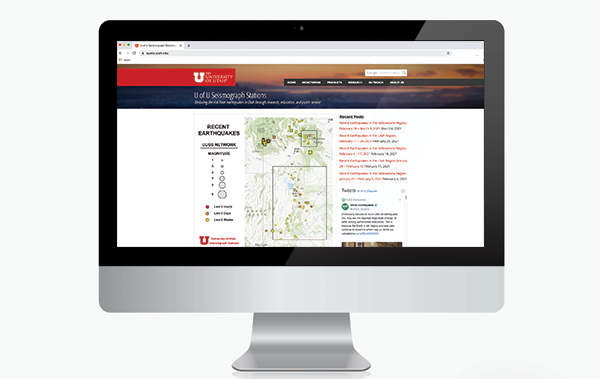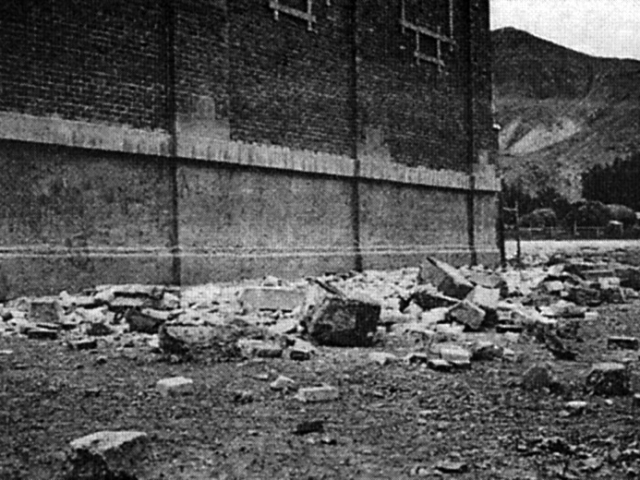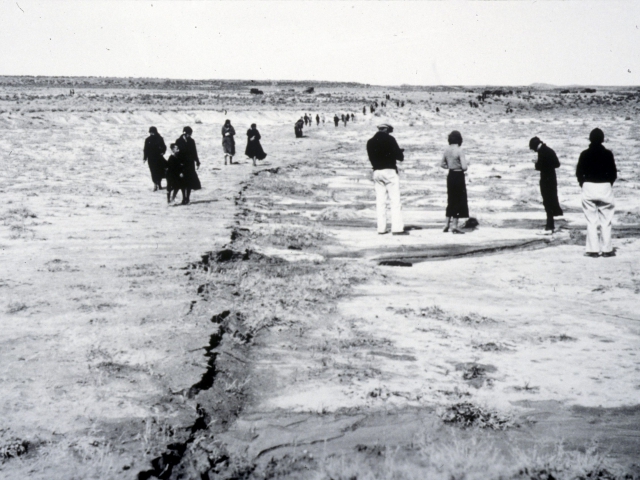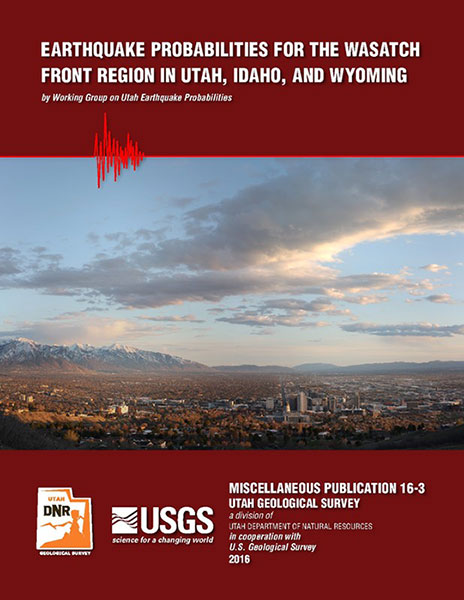Utah has experienced 17 earthquakes greater than magnitude (M) 5.5 since pioneer settlement in 1847, and geologic investigations of our region’s faults indicate a long history of repeated large earthquakes of M6.5 and greater prior to settlement. Explore this site to find data and maps of Utah’s recent earthquakes, learn about the geology of Utah earthquakes, make preparations for the next earthquake, and have your questions answered.
Recent Earthquakes
Find recent or historic earthquakes, lists, or information on selected significant earthquakes at the resources below. The University of Utah Seismograph Stations helps reduce the risk from earthquakes in Utah through research, education, and public service. The United States Geological Survey mission is to monitor, analyze, and predict current and evolving dynamics of complex human and natural Earth-system interactions and to deliver actionable intelligence at scales and timeframes relevant to decision makers.
Worldwide earthquakes of the last 12 months 3.5+
Historical Earthquakes
Studies of historical earthquakes provide a basic background for projecting future seismic hazards and losses.
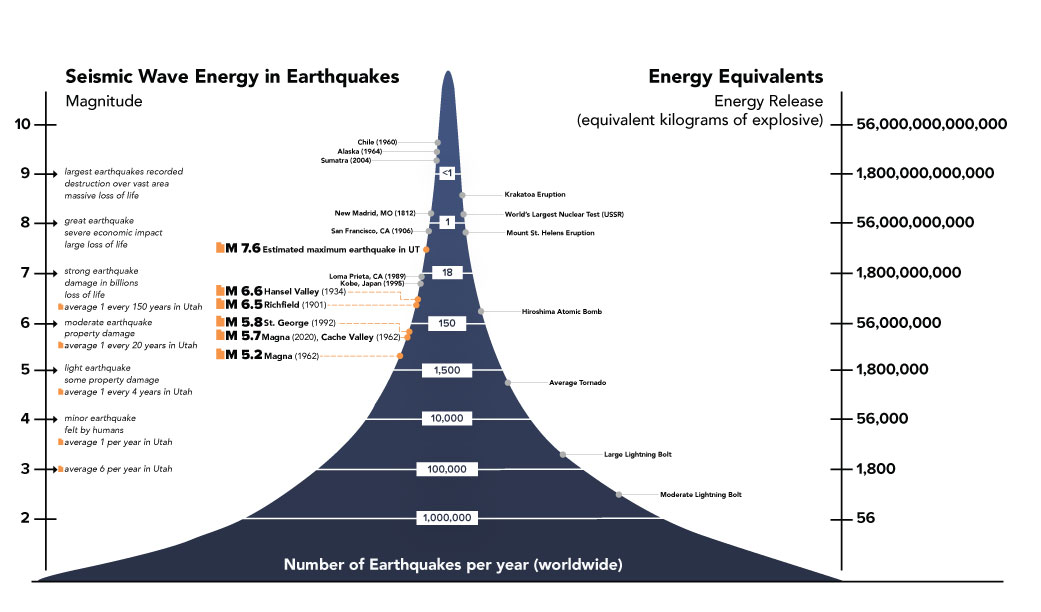
Magnitudes of historical earthquakes compared with energy release from other natural and man-made events. (Modified from Incorporated Research Institutes for Seismology, IRIS)
Historical Imagery
Utah has experienced 17 earthquakes greater than magnitude 5.5 since pioneer settlement in 1847, and geologic studies of Utah’s faults indicate a long history of repeated large earthquakes of magnitude 6.5 and greater prior to settlement. Utah is not on a boundary between tectonic plates where most of the world’s earthquakes occur, but rather is in the western part of the North American plate. However, earthquakes in Utah are related to interactions with the Pacific plate along the plate margin on the west coast of the United States.
There is a 57% probability that the Wasatch Front region will experience at least one magnitude 6.0 or greater earthquake and a 43% probability of at least one magnitude 6.75 or greater earthquake in the next 50 years.
Stretching, or horizontal extension, of the crust produces a type of dipping (or inclined) fault called a “normal” fault. The movement of normal faults is characterized by the crust above the fault plane moving down relative to the crust below the fault plane. This up/down movement differs from movement on strike-slip faults like the San Andreas in California, where the crust on one side of the fault slides horizontally past the crust on the other side. Putting Down Roots in Earthquake Country
Large Earthquakes on the Wasatch Fault
Utah Earthquakes Virtual Field Trip from the Natural History Museum of Utah
Curious about Utah's recent earthquakes? Learn more about why Utah has earthquakes and the ways past earthquakes have shaped our valley and mountains.
Additional Geologic Resources
Utah has experienced damaging earthquakes in the past and geologic evidence indicates that much larger earthquakes are likely in the future. If you live or work in Utah, you need to know why you should be concerned about earthquakes, what you can expect during and after an earthquake, and what you need to do beforehand to be safe and protect your property.
- Move or secure things that could fall on you. Look for heavy objects such as books and potted plants on high shelves, computer terminals, and top-heavy furniture that could topple or fall and injure you during an earthquake. Determine how such items can be secured. If they cannot be secured, be ready to move away from them in an earthquake.
- Be ready to move away from windows and glass partitions because they can break during an earthquake.
- Store emergency supplies in an accessible location.
- Know emergency procedures and the locations of emergency exits, fire alarms, and fire extinguishers.
- Learn the Drop, Cover, and Hold On protective action, and teach it to your family & friends (covered in next section).
- Hold earthquake drills throughout the year and participate in the Utah ShakeOut.
- Prepare a communication plan, and share it with all family members.
- Prepare a 14-day food and water storage.
Unreinforced Masonry Buildings
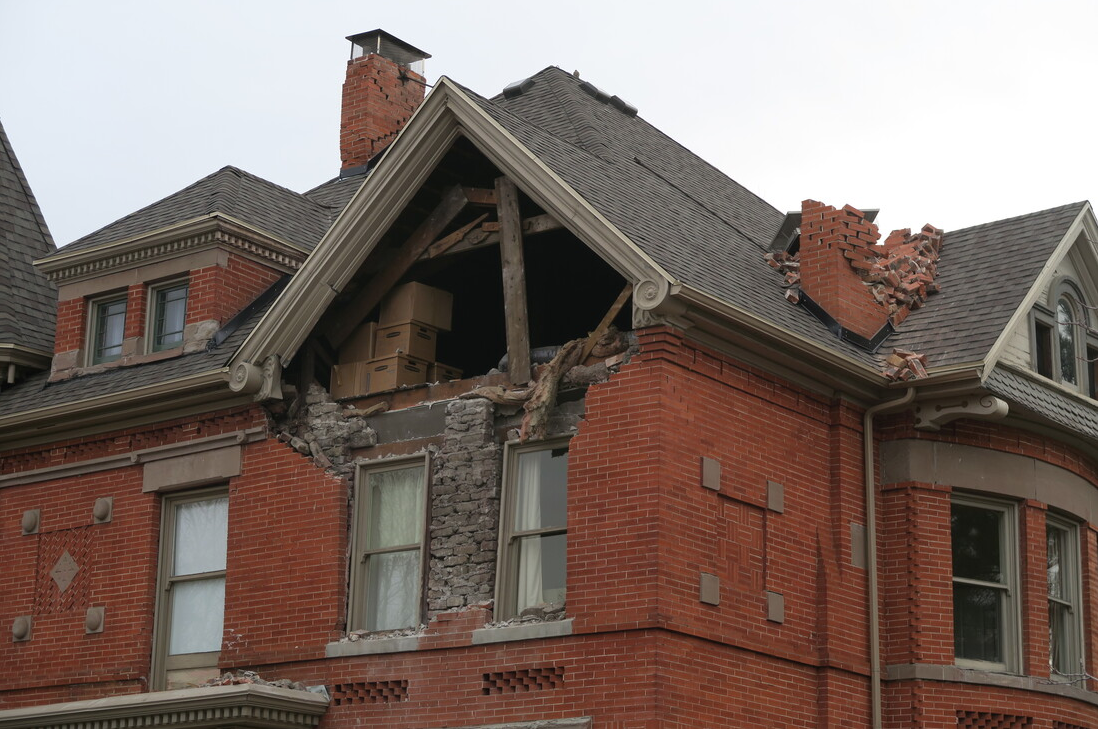
Damages and Insurance
Preparedness
Geology
Seismic Safety
Social
Myth: Utah can have a magnitude 9.0 earthquake
Fact: Earthquakes greater than about magnitude 7.6 are not possible from the Wasatch fault zone or other faults in Utah. Faults in Utah are not long enough and are a different type than those off the coast of Alaska, Washington State, and the west coast of South America (Chile area), where earthquakes of magnitude 8 or greater are possible.
Myth: Triangle of Life
Fact: According to the United States Geological Survey (USGS), the Triangle of Life is a misguided idea about the best location a person should try to occupy during an earthquake. It is actually very difficult to know where these triangles will be formed, as objects (including large, heavy objects) often move around during earthquakes. This movement means that lying beside heavy objects is very dangerous. Statistical studies of earthquake deaths show most injuries and deaths occur due to falling objects, not structures. According to the American Red Cross, Drop, Cover, and Hold On under a table or desk is still the best recommendation.


